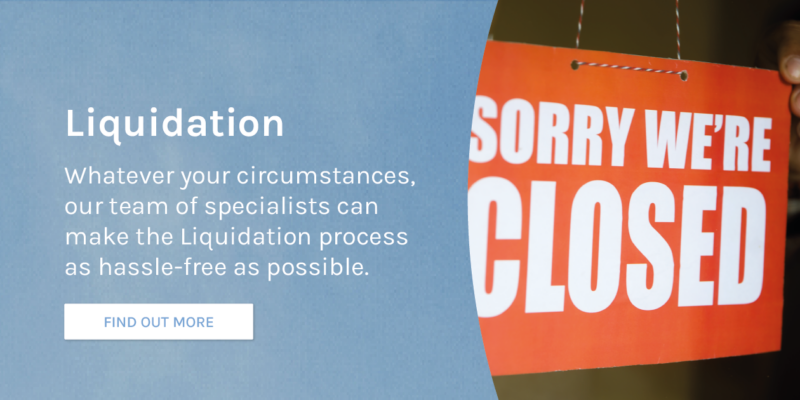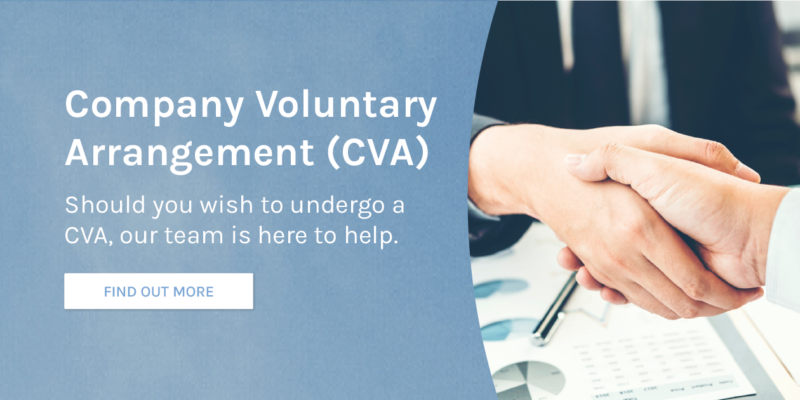In the world of business, there are times when financial difficulties become an insurmountable obstacle. After common arrangements such as administration have been attempted, your options will usually be whittled down to the more difficult ones. Ultimately, once you’ve tried every conceivable measure to correct your course, there comes a time when liquidation is the only practical path forward.
There are a few different ways to liquidate a company, and each strategy will suit some companies more than others. For instance, if you’re retiring from a solvent business, a Members Voluntary Liquidation (MVL) provides a tax-efficient strategy to wind up. However, if your debts have outstripped your assets, you’ll need to appoint an insolvency practitioner to shut down in a structured and legally-sound manner. One such way to do this is via a Creditors’ Voluntary Liquidation (CVL).
But what is a Creditors’ Voluntary Liquidation? Join us as we demystify the CVL process, explaining what it entails, why it’s so important, and how it could be the best way to make a clean break ahead of promising new ventures.
What is a Creditors’ Voluntary Liquidation?
When a business is struggling financially, the main options at its disposal to turn things around are administration and Company Voluntary Arrangements (CVA). However, if these strategies fail to reverse the firm’s fortunes, liquidation could quickly become inevitable. Choosing to sell assets in order to settle outstanding debts is known as a Creditors’ Voluntary Liquidation.
Although a CVL will signal the end of the business, it will at least help creditors to recoup unpaid debts. In most cases, the sale of an insolvent business’s assets won’t be able to generate enough funds to settle everything owed. However, unless you have signed a personal guarantee, any unpaid borrowings won’t be your liability, and will eventually be written off.
Finally, it’s also useful for anyone asking, “What is a Creditors’ Voluntary Liquidation?” to be able to distinguish between CVL and a Members’ Voluntary Liquidation (MVL). Although both processes are entered into of your own accord, the similarities end there. An MVL applies only to solvent businesses who want to wind up cost-effectively, not those whose debts have made it impossible to keep trading.
The CVL Process Explained
The CVL process is overseen throughout by a licensed insolvency practitioner. They will review the business, instigating a sequence of critical meetings between directors, creditors, and shareholders — during which the company’s future will be finalised. If shareholders agree to a CVL, the liquidator will work through a hierarchy of creditors to ensure that priority debts are settled first.
If you’re unsure how the creditors’ hierarchy works in practice, you can find a full explanation in the Insolvency Act 1986. The act states that secured creditors with fixed charges will be reimbursed first, followed by preferential creditors (such as unpaid employees) and ending with unsecured creditors. Naturally, the likelihood of recovering debt recedes the lower a creditor appears in the order of priority.
To further delve into the question, ‘What is a Creditors’ Voluntary Liquidation?’ here are the steps you will need to take as part of the process:
Step One: Board Meeting
The decision to take a CVL will hinge upon advice received from a specialist insolvency practitioner. Once settled, the director(s) will convene to arrange a general meeting between shareholders and creditors concerning the future of the company.
Step Two: Notify Shareholders and Creditors
Once the CVL has been chosen, shareholders and creditors will be informed about a board meeting and given a decision date. Creditors will learn about the true state of the company via a Statement of Affairs and your appointed insolvency expert will produce a comprehensive financial report within a day of the decision date.
Step Three: CVL Vote
At least 75% of shareholders will need to vote in favour of the CVL. Assuming this is the case, the liquidation process will officially begin at 23:59 on the decision date.
Step Four: Liquidation Begins
By selling company assets and handling creditor claims, the insolvency practitioner will play a crucial role in the liquidation process. To ensure fairness and accuracy, assets will be valued by an independent expert. All sales are made at market value and are negotiated exclusively by the insolvency specialist.
Creditors’ Voluntary Liquidation: Advantages and Disadvantages
Creditors’ Voluntary Liquidation brings both advantages and disadvantages that shift depending on your business’s circumstances. For ailing enterprises, the process offers an efficient way to gain more control, meet legal obligations, and write off significant debts. However, other directors might consider the impact on employees, risk of personal liability, and reputational damage to be major concerns.
While it’s important to understand ‘what is a creditors’ voluntary liquidation?’ gaining a balanced view of the CVL process itself is equally critical. By exploring the advantages and disadvantages, you can better determine if this route is the most suitable path for you and your business.
Creditors’ Voluntary Liquidation: The Advantages
- CVL Empowers: In stark contrast to compulsory liquidation, CVL allows you to decide your own future. Not only can you choose to liquidate assets, but you can also appoint your own liquidator.
- Claim Redundancy Pay: As a director, if you meet a set criteria you might be able to claim the same statutory redundancy entitlement that applies to other members of your workforce. To do so, you will need to have been an employee for over two years, be paid under PAYE, and have worked in a practical capacity for at least 16 hours-per-week.
- Meet Your Legal Obligations: As a director, it’s a legal responsibility for you to be aware of your company’s financial health at all times. Entering into the CVL process confirms this, which could limit creditor losses.
- Write Off Debts: When CVL comes to an end, any and all debts are written off, freeing you up to move on without the pressure of historical creditor obligations.
- Avoid Accusations of Wrongful Trading: Deciding to start the CVL process shows that you’re putting your creditors’ interests first. This minimises the likelihood of allegations of wrongful trading down the line.
- Efficient Closure: Using an expert in insolvency to oversee CVL will ensure that your business’s closure meets all relevant regulations and laws.
Creditors’ Voluntary Liquidation: The Disadvantages
- Company Closure: Building up a business is a major undertaking that requires a lot of hard work and commitment. Having it removed from the Companies House register is a sad way to close the book on the hard work and sacrifices you’re likely to have made along the way.
- Employee Wellbeing: The impact on your workforce is perhaps the most difficult factor in the closure of a business. One of the biggest disadvantages of Creditors’ Voluntary Liquidation is that widespread redundancies become sadly unavoidable.
- Personal Guarantees: As we’ve already touched upon, if you’ve made personal guarantees for your borrowing, these will not be written off. This puts your personal finances in jeopardy, as lenders will take court action if your guarantees can’t be honoured.
- Everything is Public: Although less impactful than compulsory liquidation, a CVL is still made public record, which could damage your reputation
Trust Inquesta to Steer Your Business Through CVL
If the liquidity of your business has become an urgent concern, the CVL process might first appear daunting. You’ll need an experienced insolvency practitioner by your side to negotiate the various critical legal requirements involved. You require a specialist who can tailor their approach to your needs, support your objectives, and help you look to the future with confidence. For countless businesses across the UK, Inquesta has been all of this and more, when it was needed most.
Because every company is different, we always take the time to understand what it is that makes yours so unique. This gives us the perfect platform to deliver a bespoke service that can meet your biggest needs and handle the emotional aspects of the process with sensitivity, diligence, and tact. Everything we do is designed to reach the most favourable outcome possible, guiding you towards a brighter future.
To learn more about how we can help you, book a free consultation or contact our team today.



